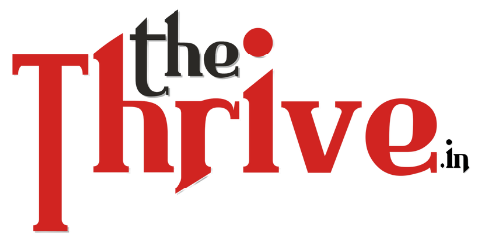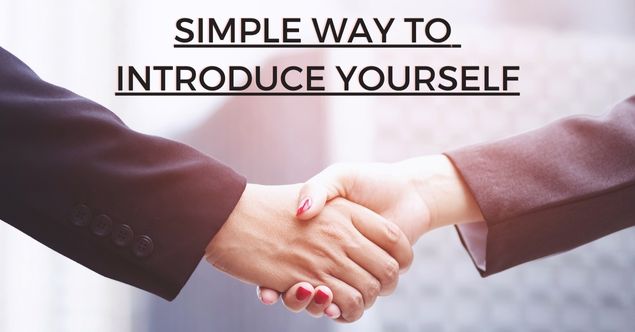If you’re confused or nervous about how to introduce yourself to others, you’re not alone. Introductions can feel uncomfortable or stressful if you need to introduce yourself to a new team of colleagues or a stranger at social events.
Presenting yourself isn't always easy. You have to craft a story that’s both powerful and persuasive, while still being authentic and relatable.
To achieve this balance, focus on the big picture of your career instead of simply listing individual accomplishments. Describe why you're passionate about what you do, identify areas in need of improvement, and outline how these elements will come together to create an even brighter future.
Start by emphasizing your core values and the beliefs that define who you are as a professional. Show how they shape your decisions and how they lead to meaningful outcomes that benefit those around you - clients, colleagues or customers.
Be sure to also show humility; highlight opportunities for growth without dwelling on mistakes or failures. Don’t be afraid to voice passions or take risks, but always strive for progress not perfection when presenting yourself and developing in your field.
Finally, express gratitude for all those who helped you along the way – whether it be mentors, partners or friends – stressing the importance of collaboration to drive long-term success.
You can stop worrying about awkward introductions because in this article you will learn the best way of introducing yourself professionally, benefits, and examples to make introducing yourself easier. Get ready to make a great first impression!
When do you use a self-introduction?
Self-introduction is kind of the act of introducing yourself to someone. When you meet someone new, you introduce yourself or ask them to introduce themself. You might even introduce yourself to hundreds of people at one go such as at conferences or seminars etc.
Introducing yourself means providing more information about yourself in simple, clean, clear and confident language, giving people an idea about yourself. Not to forget the use of body language which helps to showcase your confidence.
The Benefits Of A Strong Introduction
Knowing how to give an introduction professionally has many advantages. When you start with a strong introduction, others may perceive you as self-assured and capable.
An effective opening can make your conversation more engaging, whether your goal is to gain a job, make a sale, acquire a mentor or simply make a new professional connection. Establishing yourself as an open, friendly and professional person can create opportunities for you throughout your career.
● Helps to build connections.
● Improve self-confidence.
● Improves presentation skills.
● Leaves a powerful or impactful impression.
● Helps in building deep understanding and positive thinking habits.
Some tips to introduce yourself professionally
1) State your purpose
Many people introduce themselves by stating their name and current job title, but you also need to briefly introduce yourself and try to add information your new contact cannot find on your business card.
If you are at a social event, consider starting with your name, and then stating your passion. You could also mention your goal, such as finding someone to collaborate on a new idea.
If you are interviewing for a job, quickly summarize who you are and why you are there. Your interviewers already know what role you are applying for, so have your professional introduction explain your purpose in a few sentences. You need to include your name and why you are a good candidate for the job.
Make a note that you are required to start your introduction in a way that is appropriate for the context. For example, if you are at a social event, you might simply begin by shaking a new connection's hand and giving them your first and last name.
Then, start a conversation by asking and answering questions about their background and your own.
Briefly introduce yourself example: “My name is Sarah, I moved to New York City because advertising is my passion, and this is the place to find an inspirational, innovative ad community. I have a good background in analyzing audiences for messaging optimisation and would love to tell you about the strengths I can bring to this role.”
2) Body language is important
Both your words and your body language make an impact on first impressions about yourself. Controlling your body language is essential during the introduction.
For example: when you approach a new coworker in your department, start with a strong handshake, and maintain eye contact during the conversation with that person. Doing this shows the other person you are engaged in your interaction.
When you introduce yourself to someone, you can demonstrate confidence by speaking in a clear and good voice. During your conversation with another person, maintain natural body language with relaxed shoulders and open arms. If you are seated, stand to greet the person who walks in the room, such as during an interview.
3) Explain your value
Your professional introduction is required to convey your unique experience and qualifications so you stand out from other candidates for the specific role. Hearing an introduction that sounds different from other candidates directs your new contact's attention toward you and tends to make it more memorable for the employer.
During an interview introduction, for example, you need to let your interviewer know how you would make a valuable contribution to the team.
Example: “My name is Sarah, and I have 10 years of experience working in public relations with the Shri advertisement firm. I have worked with more than 20 destination marketing firms to increase tourism at their destinations, resulting in 40% more business at certain locations.”
4) Understand the culture
Consider researching the company before an interview or meeting to understand its company culture. For example, before an introduction to a computer programming company, review the website or social media pages to see what the company’s culture is like.
If the company seems more casual, it may be appropriate to include humour while you introduce yourself. A more formal interview or meeting with a potential customer could make you more likely to be hired or to gain the client's business.
Introducing Yourself at a Video Interview
1) Introduction
Sometimes it happens that the moment you are escorted, you start getting nervous while facing the video. You start thinking about what questions they'll ask and how to answer them in such a short period of time.
The first question in an interview can be nerve-wracking as it determines what the recruiter will think of you for the rest of your interview.
Here are some points on how to ace self-introduction:
So how do you respond when a recruiter asks, “tell me something about yourself”?
It's important to be aware that the interviewer is trying to get a better understanding of your skills and background in a short time period. You should answer this question with information specific to the position you're applying for.
key points to mention in your introduction:
- Who am I? (Include your complete name, where you come from, and your personal background)
- My educational background, (where have you worked early, your best job achievements, and work experience related to the job role.)
- Share your professional experience and training.
- Talk about your hobbies and interests.
Education & Work Experience
For example, if you're interviewing for a position in sales marketing, it would make sense to mention your experience in networking and interacting with people.
- Education: Even though your CV contains this information, it's still the best idea to remind the interviewer of how and what you studied. This will increase the chances that they pay attention to your skills during the interview section. Share your achievements and avoid sounding overconfident in what you are saying. Try to be polite and calm.
- Professional Experience: Remember to include the details of your work experience and all you learned during that period in your resume. Mention any internships and workshops you have attended and things you got to learn there.
2) Hobbies & Interests
Mention your interests after experiences, but don't get too informal. Try to keep things in a tone of voice that should be natural and conversational but not too casual; you want to focus on getting to know a person's character so it's crucial for them to know yours.
3) Why You Want the Job
Finally, it is very important that you mention what sets you apart from other candidates who may be applying for this job position. This will show the interviewer that there are reasons why they should hire you.
If possible you can state what you can do for their business. Only you know the true reason for joining the company you're interviewing with is matter to you.
Try to be genuine and honest in your motivations for the role. Your authenticity will shine throughout the interview and be remembered by recruiters.
Things to keep improving your communication skills
1) Listen Well
To be a good communicator, you first have to listen well to what the other person is saying. Communication couldn’t happen if one of the parties involved is not listening properly. By listening well, you get every important detail of the communication, and you also improve on how to communicate back well.
2) Be to the Point
The majority of the miscommunication happens when there is too much needless information given. Keep your communication concise without compromising on its importance. This applies to both written and verbal communication ways. For written communication, proofreading, and verbal communication, try to practice saying only what is important during conversation.
3) Body Language
Body language is a great way to communicate without words but still has a profound impact on managing your body. When you are in a video conference call or face-to-face meeting, keep positive body language like an open stance, respond in between and eye contact. The other person subconsciously reads this, and their body language also becomes positive will conversation.
4) Always Proofread
People assume they have not made a mistake while they do written communication. Do not make this mistake. Proofread what you have written once or twice before sending to another person.
5 Creative ways to introduce yourself
1) Share your nickname
Suppose you want to be called something other than your name, share that. They might just respond, “Oh, I have a cousin who goes by that which can create a subject to talk about.”
2) Make a “business” card
Keep something with you to give away to new people you meet anywhere in meetings or social events which is the best way to start a talk. So that you can talk beyond your name and contact information, and list random facts about yourself, your interests, and your hobbies.
3) Just start talking
It’s possible the person you’re introducing yourself to feels a little nervous and awkward as well. Dare to start talking first into the conversation and see where it goes. They might feel relieved you talked first and relax immediately and give the next person to speak.
4) Keep it relevant
Know about your surroundings? There’s a possibility something happening around you that you can use as a topic for a conversation without just walking up to a stranger with your hand outstretched and an unsolicited handshake.
5) Search for common ground
Do a little search while you’re saying hello. Small talk is only awkward until the two people find something in common. “I’m studying English, I really love reading classic novels.” You never know, they might read the same thing.
Professional Introduction Examples
Here are some examples of professional introductions in different in scenarios:
1) At an interview
Keep your introduction short and straightforward to hold your audience's attention.
Example: “My name is Riya, and I enjoy promoting small companies to help them boost their profits. I am excited about the opportunity to be part of a team that raises awareness of the businesses in Delhi. I have a good background in public relations and would love to tell you about the strengths I could bring to this position.
2) To new customers
A professional email introduction can be equally important to networking as a face-to-face meeting. Rather than body language and tone, emails rely on the clarity of language and accuracy of writing skills. A concise and error-free email impresses your contact and makes them consider your request.
Example: “My name is Yash, and I am reaching out from Bags Unlimited to inform you of the services we offer. Our company sends automatic shipments of various takeout bags to restaurants each month so you might always have enough for your clients.
We offer different packages based on your requirements, so I would love to set up a time to speak with you and give you more information.”
3) To a new coworker or team member
Your new colleague would possibly meet multiple people on their first day, so give them an introduction briefly.
Example: “My name is Anjali, and I work as the social media manager in the marketing department. Our team leader holds weekly meetings, and I look forward to working together in the future. Please let me know if I can help with anything as you yourself with the office.”
Example of a Student Introduction (for IELTS)
IELTS Speaking Introduction Question and Answers
- Examiner: Can you please tell me your full name?
- Candidate: Sure, my name’s Yash Ayudyha
- Examiner: Thank you. And what do you want me to call you?
- Candidate: Yash is fine.
- Examiner: Can you tell me where you’re from or where you belong?
- Candidate: I’m from Mumbai.
- Examiner: Can I see your identification, please?
- Candidate: Sure, here you are.
- Examiner: Thank you, that’s great. Now, in this first part, I’d like to ask you some questions about yourself. Let’s talk about it.
Summary
Throughout your professional journey, you could meet various people who can help you develop needed skills and progress. You can establish a positive connection with an interviewer, network contact or mentor when you have a polished self-introduction.
In this article, we outline how to introduce yourself professionally, and its benefits, and provide instructions and examples for introducing yourself in various situations.
FAQ's:
Instead of your name and contact information, list random facts about yourself, your interests, and your hobbies.
Personal introductions should include your name and job title. If there's an opportunity to elaborate, you can also share other details.
Formally making a person known to another or to the public. synonyms: intro, presentation.





